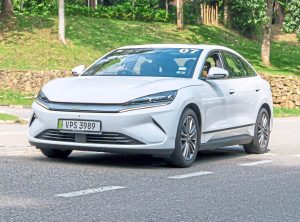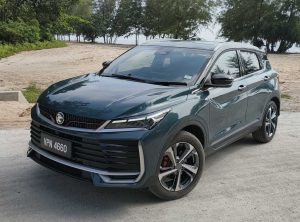INGOLSTADT: Audi Sport is collaborating with partners to explore the future of the picking process in automotive manufacturing using a new approach.
The manual picking process in automotive production involves the targeted retrieval and collection of vehicle components from various logistics containers in an area known as the “supermarket” to supply the assembly line.
Audi Sport is working with the Fraunhofer IAO and IPA institutes to investigate which technological approaches can be best integrated into the picking process in everyday work – for example, to minimize the number of incorrect parts selected, improve supply to the assembly line and reduce physical strain on employees.
"Low-volume production at Böllinger Höfe is ideal for such purposes. We produce the Audi e-tron GT family, for example. These vehicles feature a high degree of customization. That makes the picking process particularly complex and challenging due to the large number of different parts it involves," says Audi Sport GmbH head of logistics Alexander Müller.
One aspect that sets the current research project apart is the upstream needs analysis.
It involves employees performing the picking process while wearing smart glasses that use infrared cameras to record the position and movement of their eyes.
The eye-tracking glasses collect data such as pupil diameter and gaze direction.
This enables them to tell where exactly a person is looking, and which activities are most mentally strenuous.

“The approach of first identifying where employees need support and then determining how new technologies can be used to address these needs reflects our overarching goal,” explains Müller.
"We want to improve efficiency as well as the interaction between people and technology in the plant. To this end, we are bringing innovations and research to future users on site and evaluating possible solutions together,” he added.
The trials are taking place in a dedicated real-world laboratory area at Böllinger Höfe.
In the logistics section, the researchers are testing various technological aids and approaches using a true-to-life copy of the “supermarket” where the picking process takes place.
Firstly, Audi and the two Fraunhofer Institutes want to find out what potential applications of artificial intelligence (AI), such as computer vision, can aid manual picking and how these technological solutions can best support humans.
Secondly, the partners are investigating the potential applications of mobile robots.
The autonomous articulated-arm robots are equipped with various grippers and 3D sensor technology.
Real vehicle orders are used as test cases to suitably simulate the use of AI and robotics solutions.
Repeated testing and evaluation in a realistic environment allow the requirements for their practical use to be better understood and integrated into the development process.
This, together with the direct involvement of employees in this process, results in tailored solutions.












